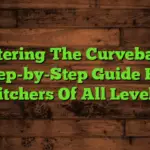Want to throw that curveball with pinpoint accuracy or unleash a blazing fastball? It all starts with the grip. This guide dives deep into how to grip a baseball for pitching, covering everything from basic grips to advanced techniques, helping you understand how different grips affect your pitches. We’ll explore various grip types, their advantages and disadvantages, and how to find the perfect grip for your pitching style. Get ready to improve your pitching game!
Your grip is the foundation of every pitch. A proper grip allows for consistent release, improved control, and increased velocity. A poor grip can lead to wild throws, decreased accuracy, and even injury. Think of it like holding a pen – a bad grip makes writing difficult and tiring. The same principle applies to pitching.
Four-Seam
Fastball Grip
The Classic Grip
The four-seam fastball is the most basic pitch. You place your index and middle fingers across the seams, applying even pressure. Your thumb rests underneath the ball, providing stability. This grip maximizes spin and velocity.
Two-Seam Fastball Grip
Movement and Control
The two-seam fastball uses only two seams to achieve more movement, typically a sinking action. You place your index and middle fingers slightly off-center, creating a “knuckle-ball” type grip. This results in less velocity but added movement for late breaking action.
Curveball Grip
The Bending Beauty
A curveball relies on a precise grip. The index and middle fingers are placed across the side seam and underneath the ball, creating a strong downward pressure. The thumb should rest slightly to the side. The pressure created here adds significant spin for that dramatic break.
Slider Grip
Sharp Lateral Movement
The slider is similar to a curveball but with a tighter grip and less spin. Instead of applying pressure under the ball, the pressure is applied more towards the sides near the seams. The release point dictates the movement. Practice helps achieve a consistent slide.
Changeup Grip
The Deception Pitch
The changeup is all about deception. You typically use a four-seam grip, but with a much softer grip using less pressure. This causes a slower velocity, creating an unexpected off-speed pitch for deceiving batters. The key is to conceal the grip.
Cutter Grip
Cutting Action
The cutter relies on a firm grip, similar to the two-seam fastball, but with the fingers angled slightly more to the side. This imparts a lateral break, making it similar to a slider but with less curvature. The key is a controlled release.
Knuckleball Grip
Unpredictable Movement
The knuckleball is notoriously difficult to master. The grip involves barely touching the ball with the fingertips, creating minimal spin and unpredictable movement. The slight pressure and release point is what gives it movement and makes it unpredictable.
Screwball Grip
Opposite of Curveball
Similar to the curveball, but the screwball breaks in the opposite direction. It requires you to use an opposite spin technique, either by using your fingers as levers from the opposite side. Master this grip requires years of practice.
Palmball Grip
Slow, Downward Pitch
The palmball involves holding the ball in the palm of your hand, using the fingers to guide the ball and release it in a slow, downward motion. This results in a slow pitch with a lot of unpredictable movement.
Grip Pressure and its Significance
Finding the Sweet Spot
The pressure you apply affects the spin, velocity, and movement of your pitch. Too much pressure can lead to decreased velocity and potential injuries, while too little can cause inconsistent throws. Experiment with different pressure levels to find your sweet spot.
Finger Placement and its Influence
The Minor Details That Make a Major Impact
Even slight changes in finger placement can significantly impact a pitch’s movement. Precise placement is crucial for control and consistency. Paying attention to the seam placement on the fingers ensures repeatable movements.
The Role of Hand Size and Finger Length
Adapting the Grip to your Anatomy
Your hand size and finger length will influence your grip. Longer fingers might allow for better control, while smaller hands might require adjustments in pressure and finger placement. Experiment and adapt your grip to match your physical characteristics.
Common Grip Mistakes and How to Avoid Them
Identifying and Correcting Flaws
Common mistakes include inconsistent pressure, improper finger placement, and a weak grip. Identifying these errors early is crucial for improving your pitching accuracy and consistency. Use a mirror or record videos of your pitching sessions to pinpoint inconsistencies.
Improving Your Grip Through Practice and Drills
Repetition is Key
Consistent practice is crucial for perfecting your grip. Start with basic grips and drills, gradually increasing complexity as you improve. Dry-land practice and using a weighted ball can enhance finger strength and control.
Visualizing and Feeling the Grip
Mental and Physical Coordination
Develop a strong mental image of your desired grip and how the ball should feel in your hand. Regular practice will help build muscle memory and ensure consistency. Feel the ball, and visualize the result of the pitch.
Choosing the Right Pitch for Different Situations
Strategy and Game Sense
Understanding which pitch to use in different situations is crucial. Your grip selection should complement your strategy and your strengths as a pitcher. You can tailor your grip for the situation you’re in.
The Importance of a Proper Release Point
Integrating Grip and Release
A proper release point is as crucial as the grip itself. The way you release the ball impacts its spin, velocity, and overall effectiveness. Coordinate your grip and release to maximize your pitch’s potential.
Frequently Asked Questions
What is the best grip for a beginner pitcher?
For beginners, the four-seam fastball grip is generally recommended due to its simplicity and ease of learning. It provides a good foundation for developing consistent throwing motion. Once comfortable, try a two-seam fastball grip.
How can I improve my grip strength?
Grip strength can be improved through various exercises. Grip strength training equipment, such as grip strengtheners and hand weights, is effective for improving strength. Dry-land practices, like throwing a baseball with no motion, improve strength and grip. Focus on increasing pressure gradually.
How do I know if my grip is correct?
Observe the flight of the ball, and your control. Consistent results show a proper grip. Inconsistent throws often point to grip problems. Record yourself pitching to help in evaluation. Get professional feedback to know if your form is correct.
Can a bad grip cause injury?
Yes, an incorrect or inconsistent grip can put undue stress on your wrist, elbow, and shoulder joints, which can lead to injury. Maintaining consistent form prevents potential injury. Proper technique protects your body.
How long does it take to master different pitching grips?
Mastering different grips takes time and consistent practice. Some people might take weeks or months, while others might take longer. Don’t be discouraged by slow progress. Consistent effort is key.
Final Thoughts
Mastering the art of how to grip a baseball for pitching is a journey, not a destination. It requires dedication, practice, and a willingness to experiment. By understanding the fundamentals, practicing diligently, and adapting your grip to your individual needs, you can significantly improve your pitching performance. Remember, the perfect grip is the one that feels most natural and consistent for you. So, grab your baseball, start practicing, and unleash your inner pitching ace! Now go out there and dominate the mound!





